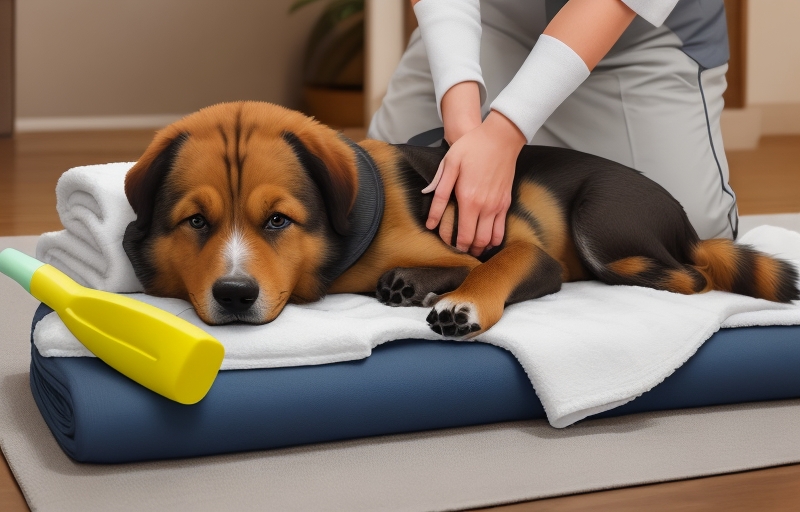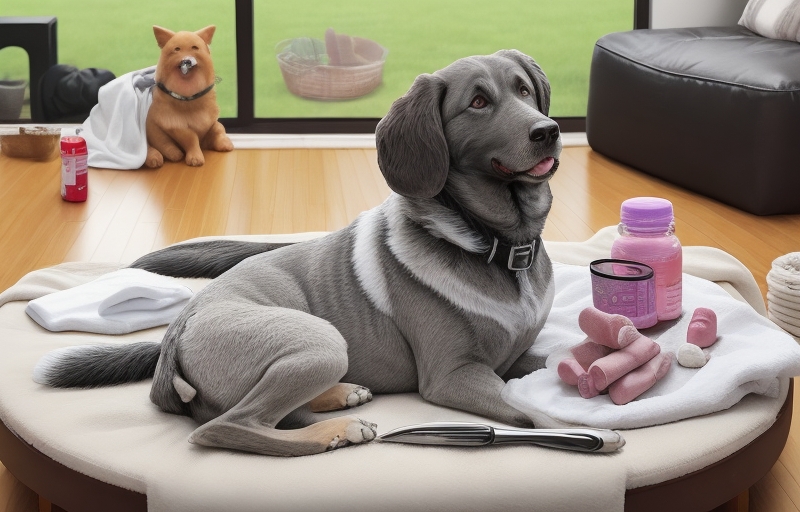Discover the benefits of dog massage for arthritis, how to perform it effectively, and frequently asked questions to ensure your furry friend’s well-being. Learn how this therapeutic practice can enhance your dog’s quality of life.
Introduction
Dogs, like humans, can suffer from arthritis, a condition that causes joint inflammation and discomfort. One effective way to alleviate their pain and improve their mobility is through massage therapy. In this comprehensive guide, we’ll delve into the world of dog massage for arthritis, exploring its benefits, techniques, and common FAQs.
Benefits of Dog Massage for Arthritis

Pain Relief:
Massage can help alleviate pain associated with arthritis by promoting the release of endorphins, the body’s natural painkillers.
Improved Circulation:
Massage enhances blood flow, which aids in delivering essential nutrients to affected joints and promotes the removal of waste products, contributing to overall joint health.
Increased Flexibility:
Gentle manipulation of the muscles and joints during massage can enhance flexibility, making it easier for arthritic dogs to move comfortably.
Reduced Inflammation:
Massage may help reduce inflammation in the joints, providing relief to dogs suffering from arthritis-related swelling.
Enhanced Range of Motion:
Regular massage sessions can improve the range of motion in arthritic joints, allowing for more comfortable and natural movement.
Muscle Relaxation:
Massaging the muscles surrounding arthritic joints helps them relax, reducing muscle tension and stiffness often associated with arthritis.
Stimulated Synovial Fluid Production:
Massage can stimulate the production of synovial fluid, which lubricates joints, reducing friction and improving joint mobility.
Improved Mood and Behavior:
Dogs with arthritis may experience improved mood and behavior as a result of the relaxation and stress reduction associated with massage therapy.
Promotion of Healing:
Massage can contribute to the healing process by increasing blood flow to injured tissues and promoting the release of growth factors that aid in tissue repair.
Enhanced Quality of Life:
Overall, regular massage for arthritic dogs can significantly improve their quality of life by reducing pain, improving mobility, and promoting a sense of well-being.
How to Perform Dog Massage for Arthritis

1. Choose the Right Environment
Select a quiet and comfortable space, free from distractions, to ensure your dog feels at ease during the massage.
2. Begin with Gentle Strokes
Start the massage with gentle, slow strokes to relax your dog and get them accustomed to the touch.
3. Focus on Affected Joints

Concentrate on the joints affected by arthritis, using circular motions and light pressure to enhance blood flow and reduce stiffness.
4. Use Calming Techniques
Combine massage with calming techniques such as soft music or aromatherapy to create a soothing atmosphere.
5. Gradually Increase Pressure
As your dog becomes more comfortable, gradually increase the pressure of your massage, targeting deeper muscle layers.
Performing a dog massage for arthritis requires a few key items to ensure a safe and effective session. Here’s a list of things you may need:
What Things Are Required For Dog Massage for Arthritis

Quiet and Comfortable Space:
Choose a quiet and comfortable area where your dog can relax during the massage. Minimize distractions to create a calm environment.
Non-Slip Surface:
Use a non-slip surface, such as a yoga mat or a soft blanket, to provide stability for your dog during the massage.
Massage Oil or Balm:
Consider using a pet-friendly massage oil or balm to reduce friction and make the massage more comfortable for your dog. Make sure the product is safe for dogs and won’t cause irritation.
Towels or Blankets:
Have towels or blankets on hand to keep your dog warm and provide additional comfort during and after the massage.
Gentle Music (Optional):
Soft and calming music can enhance the relaxation effect of the massage. However, not all dogs may appreciate this, so observe your dog’s reaction.
Brush or Comb:

Before starting the massage, brush or comb your dog’s coat to remove any tangles or mats. This helps prevent discomfort during the massage.
Treats:
Use treats as positive reinforcement to create a positive association with the massage. Reward your dog for staying calm and relaxed during the session.
Vet Consultation:
Before initiating a massage routine, consult with your veterinarian to ensure that the massage is suitable for your dog’s specific arthritis condition. They can guide the appropriate techniques and frequency.
Understanding of Canine Anatomy:
Familiarize yourself with basic canine anatomy, especially the location of joints and muscles. This knowledge will help you target areas affected by arthritis more effectively.
Patience and Observation:
Every dog is different, so be patient and observe your dog’s reactions during the massage. Pay attention to signs of discomfort or relaxation, and adjust your technique accordingly.
Conclusion
Dog massage for arthritis is a holistic approach to managing discomfort and improving your furry friend’s quality of life. By understanding the benefits, learning effective techniques, and addressing common concerns, you can confidently incorporate this therapeutic practice into your dog’s routine. Always consult with your veterinarian for personalized advice tailored to your dog’s specific needs.
Read Also: How to Massage a Dog with Arthritis
Frequently Asked Questions (FAQs)
Q1: How often should I massage my dog with arthritis?
The frequency of dog massage for arthritis depends on the severity of the condition. In general, aim for 2-3 sessions per week, adjusting based on your dog’s response.
Q2: Can I use any oil for the massage?
It’s recommended to use pet-safe massage oils or consult your veterinarian for suitable alternatives. Avoid essential oils that may be harmful to dogs.
Q3: Are there specific massage techniques for different types of arthritis?
Yes, the massage techniques may vary based on the type and location of arthritis. Consult with your vet or a professional canine massage therapist for tailored advice.
Q4: Can I massage my dog if they are on arthritis medication?
Always consult your veterinarian before starting any massage therapy, especially if your dog is on medication. Massage can complement medical treatments but should not replace them.
Q5: What signs indicate that my dog is benefiting from the massage?
Signs of improvement may include increased mobility, reduced stiffness, and a generally happier demeanor. Monitor your dog’s response and consult your vet if you observe any adverse reactions.

2 thoughts on “Dog Massage for Arthritis: A Comprehensive Guide to Alleviating Discomfort”